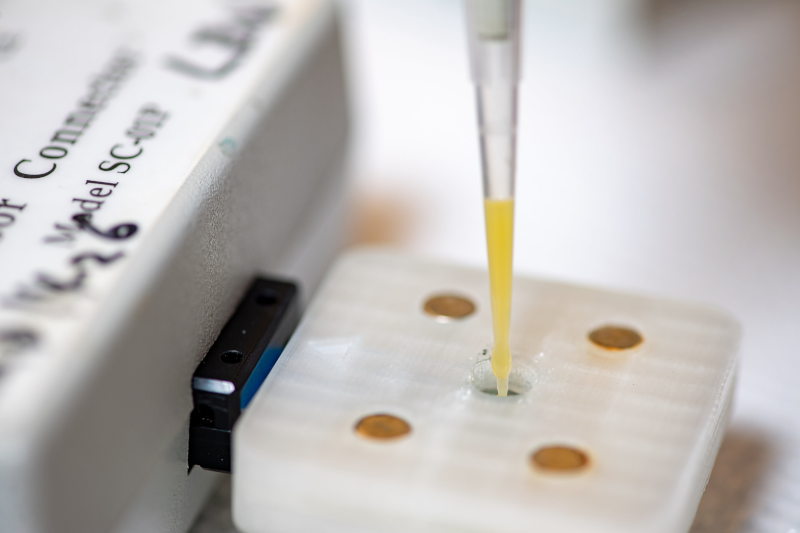Typically, detecting glyphosate — a herbicide — in a beverage requires a sophisticated test setup. But Washington State University has a 3D printed sensor that uses nanotubes to simplify the detection of the toxin.
The idea is very similar to inexpensive blood glucose monitors. The test will eventually find use for human samples, but the initial testing was for detecting contamination in orange juice.
Traditionally, detection would require either a mass spectrograph or antibodies that bond with the contaminant. The disadvantage of a mass spectrograph is obvious and while antibodies might be a bit easier to deal with, they require storage and handling to ensure the test’s integrity.
The test uses electrically-conductive polymer nanotubes that have molecular scale cavities made to trap the glyphosate molecules in much the same way as an antibody. These tubes are placed on a 3D printed substrate and an electric current can quantify the amount of glyphosate.
These are exciting days if you are interested in nano fabrication. As for herbicides, we prefer search and destroy robots instead of chemicals, where possible.
















the correct name is mass spectrometer
Hmm… the instrument is a mass spectrometer. The output is a mass spectrograph or spectrogram. At least, when I used to have one in my lab, that’s how we called it. Just like you use an X-ray machine to get a radiograph.
I think Jef might be correct. The phrase: “Traditionally, detection would require either a mass spectrograph or…” seems to indicate the measurement instruments, much as detection of a broken bone often requres an X-ray, though the radiograph(gram) is a necessary step in viewing the data. Much respect Al.
I’m sad that nobody has designed a airborne sensor yet…
A live map of glyphosate levels in the air when farmers are treating crops and wind disperses it would be really nice, and the red clouds on the map would have a real psychological effect…
We do have an airborne sensor — they’re called bees.
But very very high latency, and the sensor cannot be reused.
Not sure bees are a great Glyphosate sensor.
Several studies do show impacts on bee health from exposure to glyphosate but all of these that I have seen appear to be based on formulated glyphosate products which will contain adjuvants designed to improve the effectiveness of the glyphosate at killing plants; typically these are going to be surfactants which are often not that nice themselves. Dipping bees in dilute dish soap is unlikely to make them happy, more so if it is mildly corrosive dish soap specifically selected for its ability to disrupt the waxy surface of a plant leaf and increase pesticide uptake.
so what are the blue clouds on the map, then ?
Why would you want to detect it?
According to Monsanto the stuff is harmless, and they know more about it then I do.
It’s not what they know, it’s what they tell you.. Have they published data from trials about ingesting this chemical for 20 or 30 years? Or data from trials when Glysophate is mixed with countless other pesticides etc,? What about German studies that detected Glyphosate in urine samples of a substantial percentage of those studied. What about Teflon, the forever chemical. Know about that case?
They need to detect it because feeding their beverages to plants has been killing them. It must be the glyphosate.
But… it’s got electrolytes!
So what is 3d printed? (other than the enclosure)
They’re at WSU studying materials science, creating new nanomaterials, and using 3D printing as part of the process. Not for the enclosure, but perhaps the substrate: “These nanotubes are then coated on a 3-D-printed sensor device that uses an electric current to quantify the glyphosate concentration. “